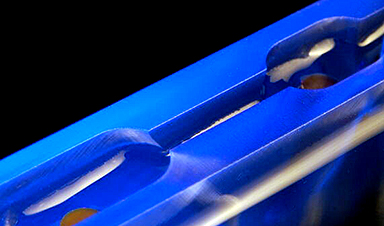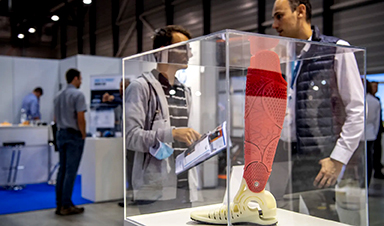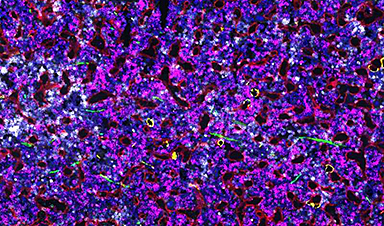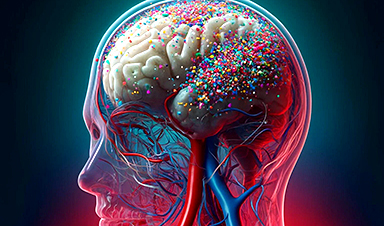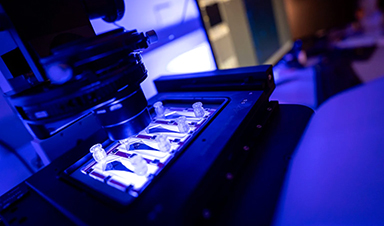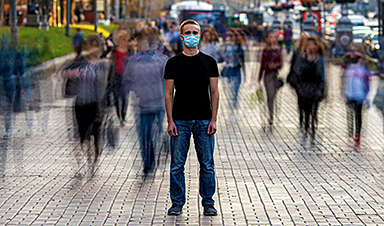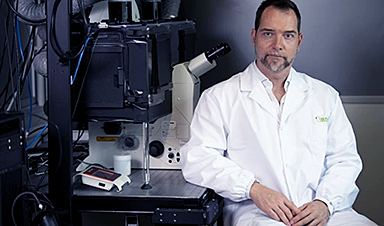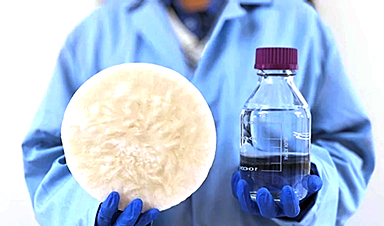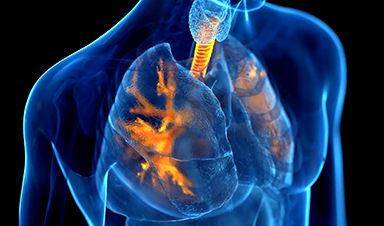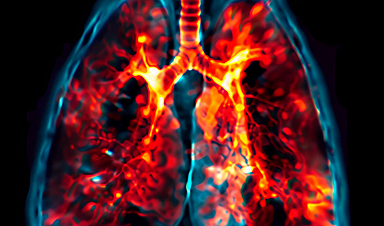| The next generation of phones and wireless devices are going to need new antennae to access higher and higher frequency ranges. One way to make antennae that work at tens of gigahertz — the frequencies needed for 5G and higher devices — is to braid filaments about 1 micrometer in diameter. But today’s industrial fabrication techniques won’t work on fibers that small. | |
| Now a team of researchers from the Harvard John A. Paulson School of Engineering and Applied Sciences (SEAS) has developed a simple machine that uses the surface tension of water to grab and manipulate microscopic objects, offering a potentially powerful tool for nanoscopic manufacturing. |
| The research is published in Nature (“3D-printed machines that manipulate microscopic objects using capillary forces”). | |
| “Our work offers a potentially inexpensive way to manufacture microstructured and possibly nanostructured materials,” said Vinothan Manoharan, the Wagner Family Professor of Chemical Engineering and Professor of Physics at SEAS and senior author of the paper. “Unlike other micromanipulation methods, like laser tweezers, our machines can be made easily. We use a tank of water and a 3D printer, like the ones found at many public libraries.” | |
| The machine is a 3D-printed plastic rectangle, about the size of an old Nintendo cartridge. The interior of the device is carved with channels that intersect. Each channel has wide and narrow sections, like a river that expands in some parts and narrows in others. The channel walls are hydrophilic, meaning they attract water. | |
| Through a series of simulations and experiments, the researchers found that when they submerged the device in water and placed a millimeter-sized plastic float in the channel, the surface tension of the water caused the wall to repel the float. If the float was in a narrow section of the channel, it moved to a wide section, where it could float as far away from the walls as possible. | |
| Once in a wide section of the channel, the float would be trapped in the center, held in place by the repulsive forces between the walls and float. As the device is lifted out of the water, the repulsive forces change as the shape of the channel changes. If the float was in a wide channel to start, it may find itself in a narrow channel as the water level falls and need to move to the left or right to find a wider spot. |
| “The eureka moment came when we found we could move the objects by changing the cross-section of our trapping channels,” said Maya Faaborg, an associate at SEAS and co-first author of the paper. | |
| The researchers then attached microscopic fibers to the floats. As the water level changed and the floats moved to the left or right within the channels, the fibers twisted around each other. | |
| “It was a shout-out-loud-in-joy moment when — on our first try — we crossed two fibers using only a piece of plastic, a water tank, and a stage that moves up and down,” said Faaborg. | |
| The team then added a third float with a fiber and designed a series of channels to move the floats in a braiding pattern. They successfully braided micrometer-scale fibers of the synthetic material Kevlar. The braid was just like a traditional three-strand hair braid, except that each fiber was 10-times smaller than a single human hair. | |
| The researchers then showed that the floats themselves could be microscopic. They made machines that could trap and move colloidal particles 10 micrometers in size — even though the machines were a thousand times bigger. | |
| “We weren’t sure it would work, but our calculations showed that it was possible,” said Ahmed Sherif, a PhD student at SEAS and a co-author of the paper. “So we tried it, and it worked. The amazing thing about surface tension is that it produces forces that are gentle enough to grab tiny objects, even with a machine big enough to fit in your hand.” | |
| Next, the team aims to design devices that can simultaneously manipulate many fibers, with the goal of making high-frequency conductors. They also plan to design other machines for micromanufacturing applications, such as building materials for optical devices from microspheres. |
News
Muscles from the 3D printer
Swiss researchers have developed a method for printing artificial muscles out of silicone. In the future, these could be used on both humans and robots. Swiss researchers have succeeded in printing artificial muscles out [...]
Beneficial genetic changes observed in regular blood donors
Researchers at the Francis Crick Institute have identified genetic changes in blood stem cells from frequent blood donors that support the production of new, non-cancerous cells. Understanding the differences in the mutations that accumulate [...]
Shocking Amounts of Microplastics in the Brain – It Could Be Increasing Our Risk of Dementia
The brain has higher concentrations of plastic particles compared to other organs, with increased levels found in dementia patients. In a comprehensive commentary published in Brain Medicine, researchers highlight alarming new evidence of microplastic accumulation [...]
Baffling Scientists for Centuries: New Study Unravels Mystery of Static Electricity
ISTA physicists demonstrate that contact electrification depends on the contact history of materials. For centuries, static electricity has intrigued and perplexed scientists. Now, researchers from the Waitukaitis group at the Institute of Science and [...]
Tumor “Stickiness” – Scientists Develop Potential New Way To Predict Cancer’s Spread
UC San Diego researchers have developed a device that predicts breast cancer aggressiveness by measuring tumor cell adhesion. Weakly adherent cells indicate a higher risk of metastasis, especially in early-stage DCIS. This innovation could [...]
Scientists Just Watched Atoms Move for the First Time Using AI
Scientists have developed a groundbreaking AI-driven technique that reveals the hidden movements of nanoparticles, essential in materials science, pharmaceuticals, and electronics. By integrating artificial intelligence with electron microscopy, researchers can now visualize atomic-level changes that were [...]
Scientists Sound Alarm: “Safe” Antibiotic Has Led to an Almost Untreatable Superbug
A recent study reveals that an antibiotic used for liver disease patients may increase their risk of contracting a dangerous superbug. An international team of researchers has discovered that rifaximin, a commonly prescribed antibiotic [...]
Scientists Discover Natural Compound That Stops Cancer Progression
A discovery led by OHSU was made possible by years of study conducted by University of Portland undergraduates. Scientists have discovered a natural compound that can halt a key process involved in the progression [...]
Scientists Just Discovered an RNA That Repairs DNA Damage – And It’s a Game-Changer
Our DNA is constantly under threat — from cell division errors to external factors like sunlight and smoking. Fortunately, cells have intricate repair mechanisms to counteract this damage. Scientists have uncovered a surprising role played by [...]
What Scientists Just Discovered About COVID-19’s Hidden Death Toll
COVID-19 didn’t just claim lives directly—it reshaped mortality patterns worldwide. A major international study found that life expectancy plummeted across most of the 24 analyzed countries, with additional deaths from cardiovascular disease, substance abuse, and mental [...]
Self-Propelled Nanoparticles Improve Immunotherapy for Non-Invasive Bladder Cancer
A study led by Pohang University of Science and Technology (POSTECH) and the Institute for Bioengineering of Catalonia (IBEC) in South Korea details the creation of urea-powered nanomotors that enhance immunotherapy for bladder cancer. The nanomotors [...]
Scientists Develop New System That Produces Drinking Water From Thin Air
UT Austin researchers have developed a biodegradable, biomass-based hydrogel that efficiently extracts drinkable water from the air, offering a scalable, sustainable solution for water access in off-grid communities, emergency relief, and agriculture. Discarded food [...]
AI Unveils Hidden Nanoparticles – A Breakthrough in Early Disease Detection
Deep Nanometry (DNM) is an innovative technique combining high-speed optical detection with AI-driven noise reduction, allowing researchers to find rare nanoparticles like extracellular vesicles (EVs). Since EVs play a role in disease detection, DNM [...]
Inhalable nanoparticles could help treat chronic lung disease
Nanoparticles designed to release antibiotics deep inside the lungs reduced inflammation and improved lung function in mice with symptoms of chronic obstructive pulmonary disease By Grace Wade Delivering medication to the lungs with inhalable nanoparticles [...]
New MRI Study Uncovers Hidden Lung Abnormalities in Children With Long COVID
Long COVID is more than just lingering symptoms—it may have a hidden biological basis that standard medical tests fail to detect. A groundbreaking study using advanced MRI technology has uncovered significant lung abnormalities in [...]
AI Struggles with Abstract Thought: Study Reveals GPT-4’s Limits
While GPT-4 performs well in structured reasoning tasks, a new study shows that its ability to adapt to variations is weak—suggesting AI still lacks true abstract understanding and flexibility in decision-making. Artificial Intelligence (AI), [...]
